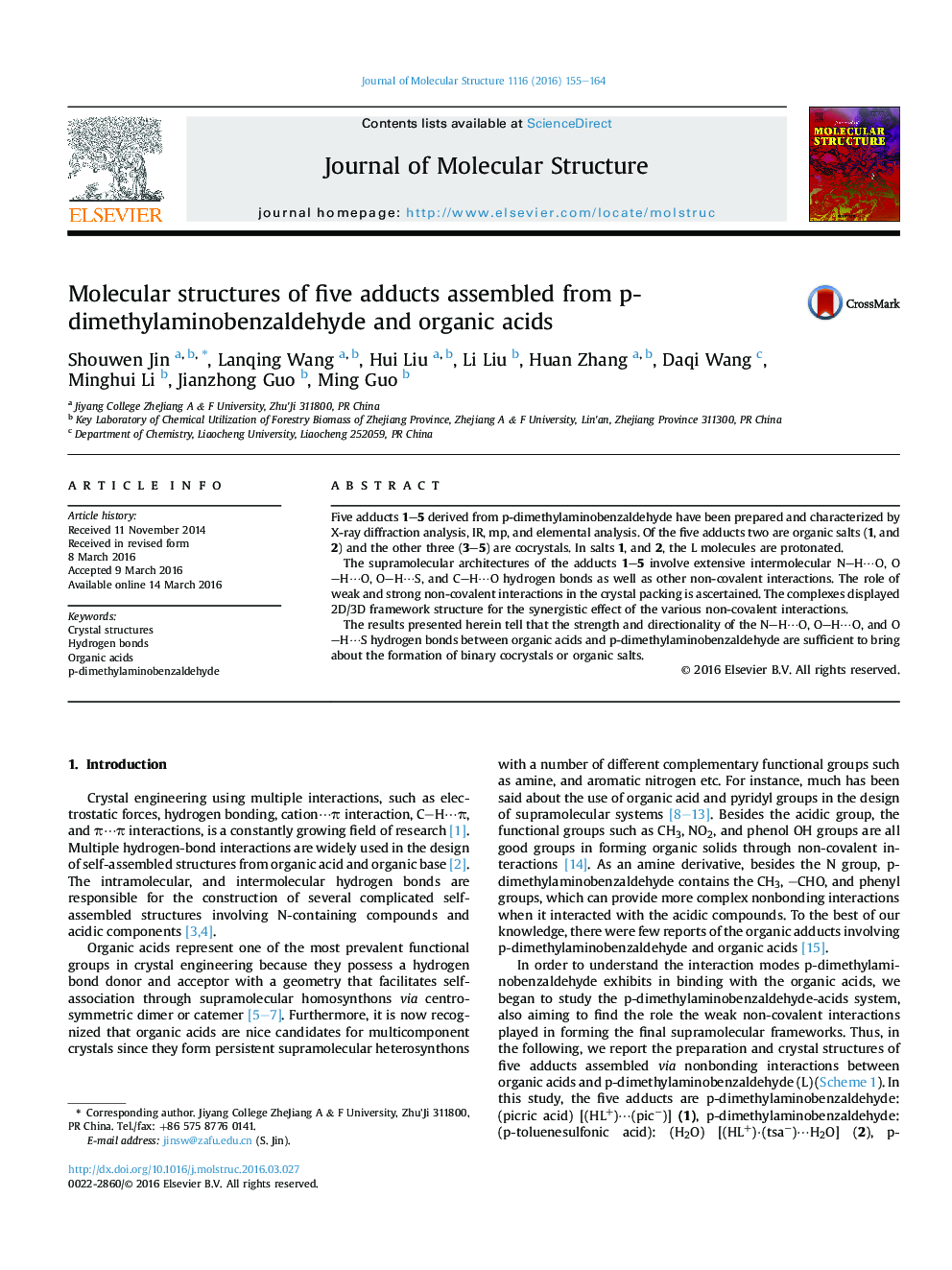| Article ID | Journal | Published Year | Pages | File Type |
|---|---|---|---|---|
| 1407786 | Journal of Molecular Structure | 2016 | 10 Pages |
•Five adducts bearing p-dimethylaminobenzaldehyde have been prepared and characterized.•The H-bonds between p-dimethylaminobenzaldehyde and organic acids have been ascertained.•The classical hydrogen bonds are the primary forces in these structures.•The secondary interactions also play important role in structure propagation.
Five adducts 1–5 derived from p-dimethylaminobenzaldehyde have been prepared and characterized by X-ray diffraction analysis, IR, mp, and elemental analysis. Of the five adducts two are organic salts (1, and 2) and the other three (3–5) are cocrystals. In salts 1, and 2, the L molecules are protonated.The supramolecular architectures of the adducts 1–5 involve extensive intermolecular N–H⋯O, O–H⋯O, O–H⋯S, and C–H⋯O hydrogen bonds as well as other non-covalent interactions. The role of weak and strong non-covalent interactions in the crystal packing is ascertained. The complexes displayed 2D/3D framework structure for the synergistic effect of the various non-covalent interactions.The results presented herein tell that the strength and directionality of the N–H⋯O, O–H⋯O, and O–H⋯S hydrogen bonds between organic acids and p-dimethylaminobenzaldehyde are sufficient to bring about the formation of binary cocrystals or organic salts.
